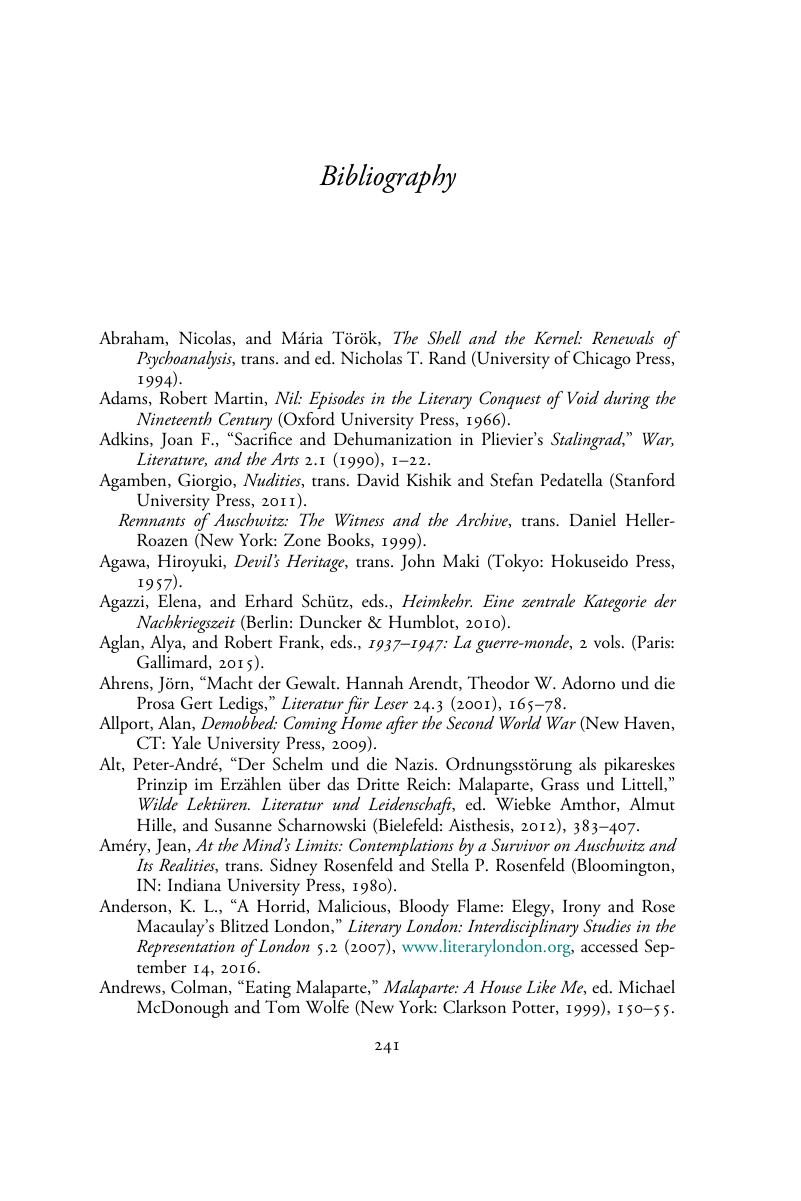Bibliography
Published online by Cambridge University Press: 30 April 2020
Summary

- Type
- Chapter
- Information
- The Literature of Absolute WarTransnationalism and World War II, pp. 241 - 268Publisher: Cambridge University PressPrint publication year: 2020



